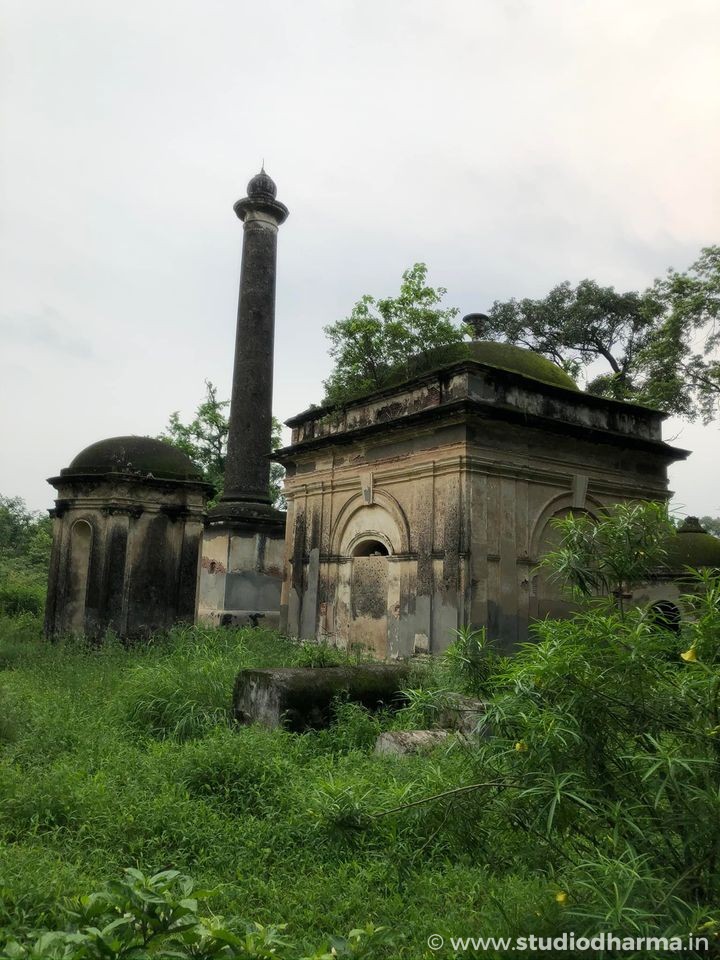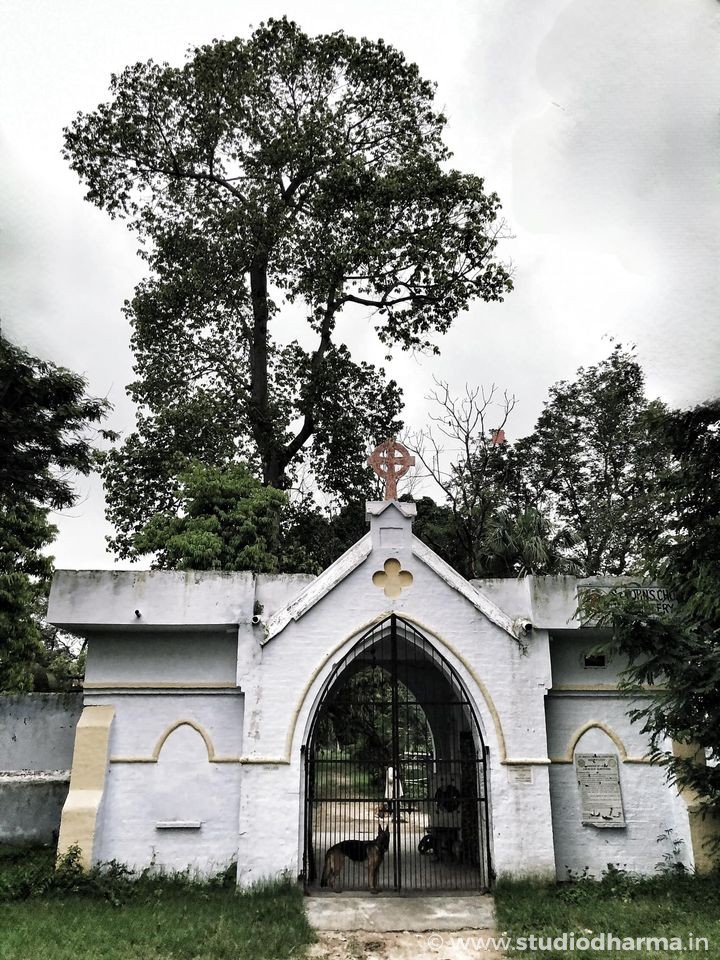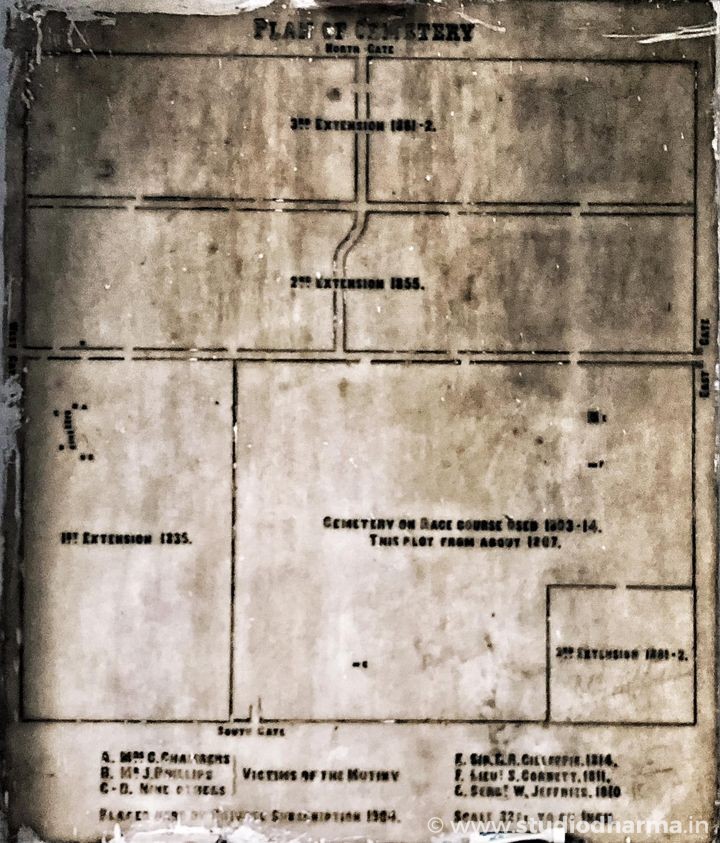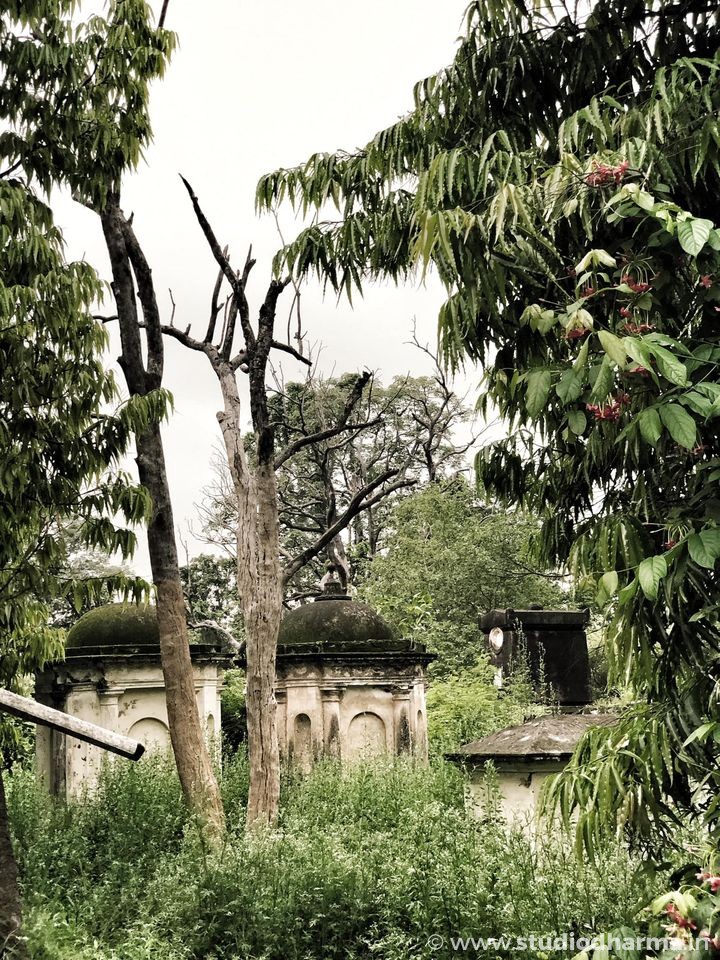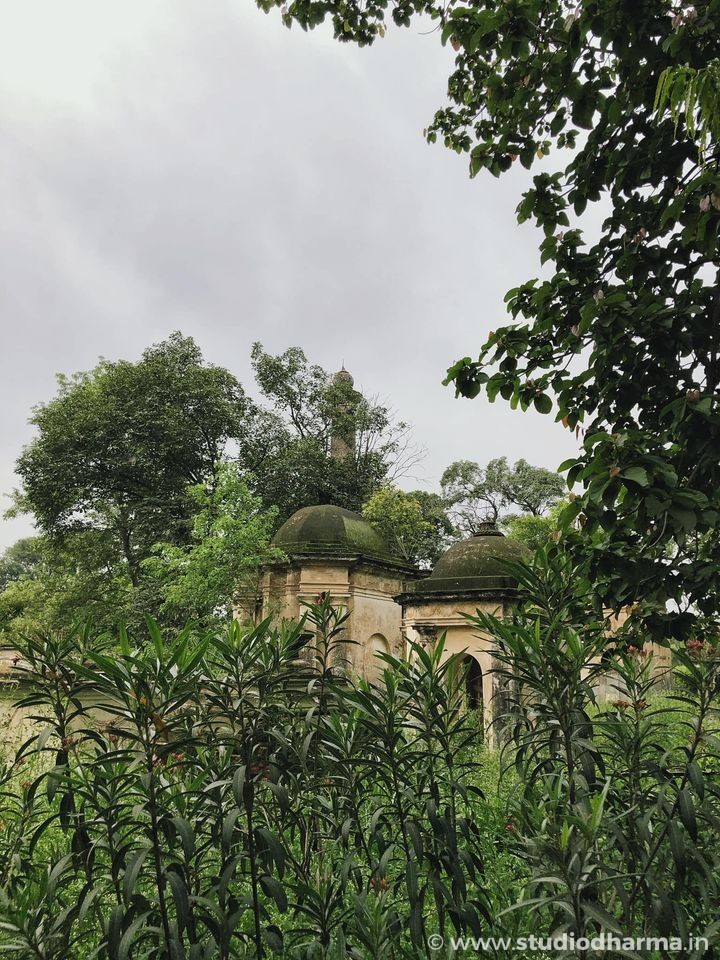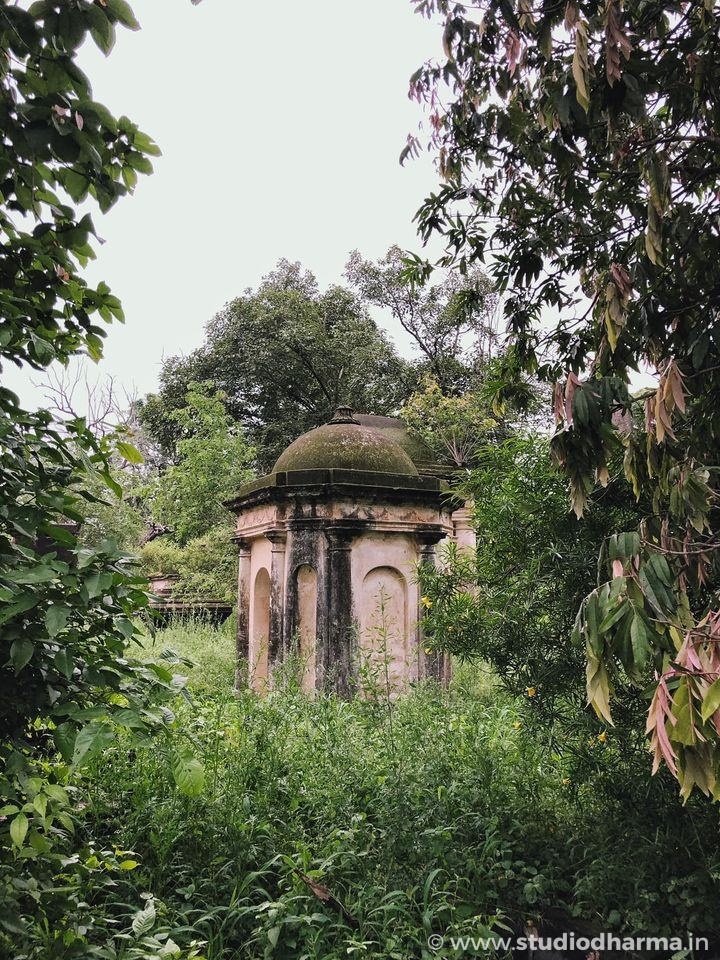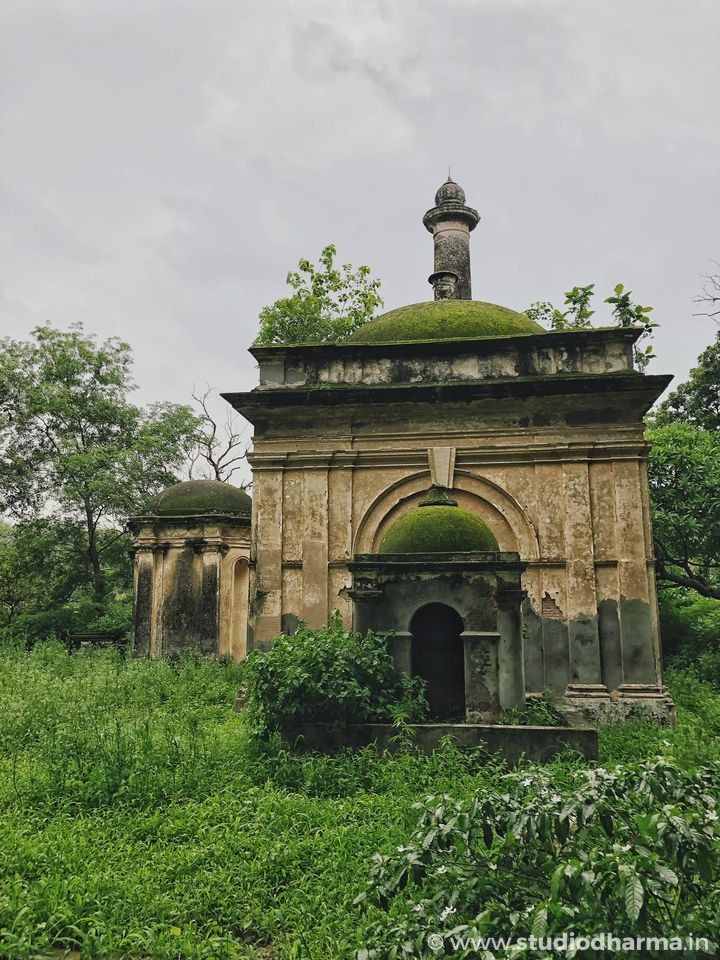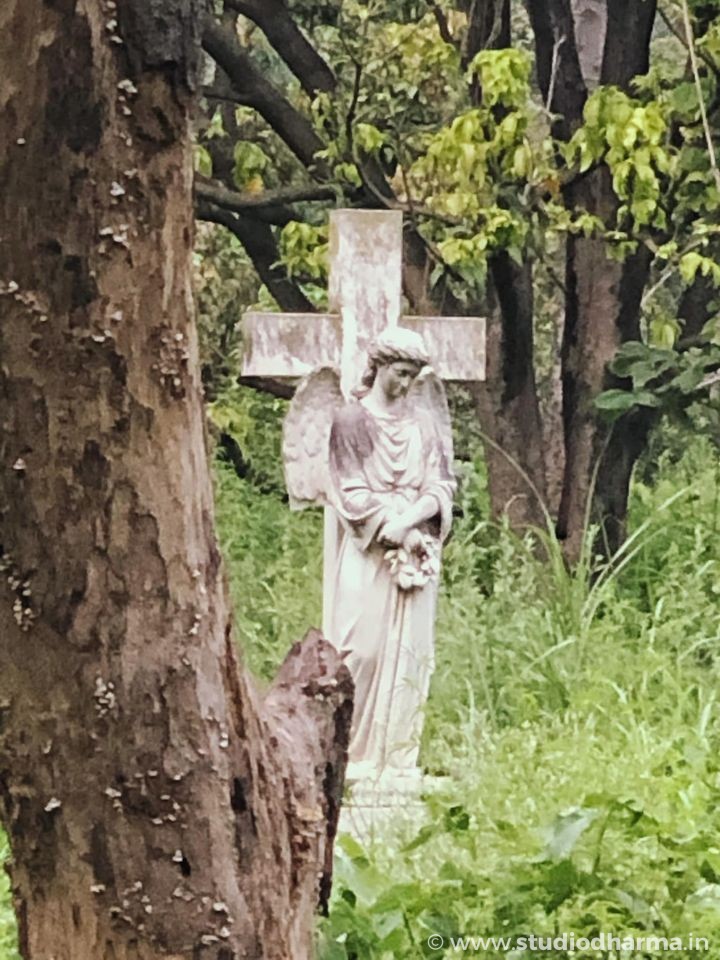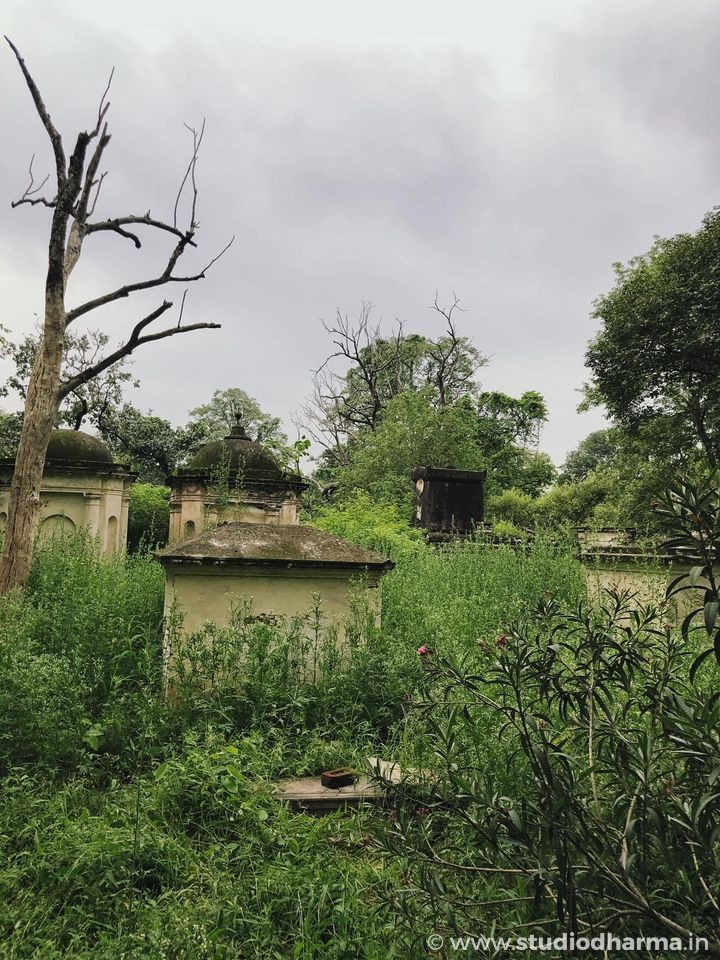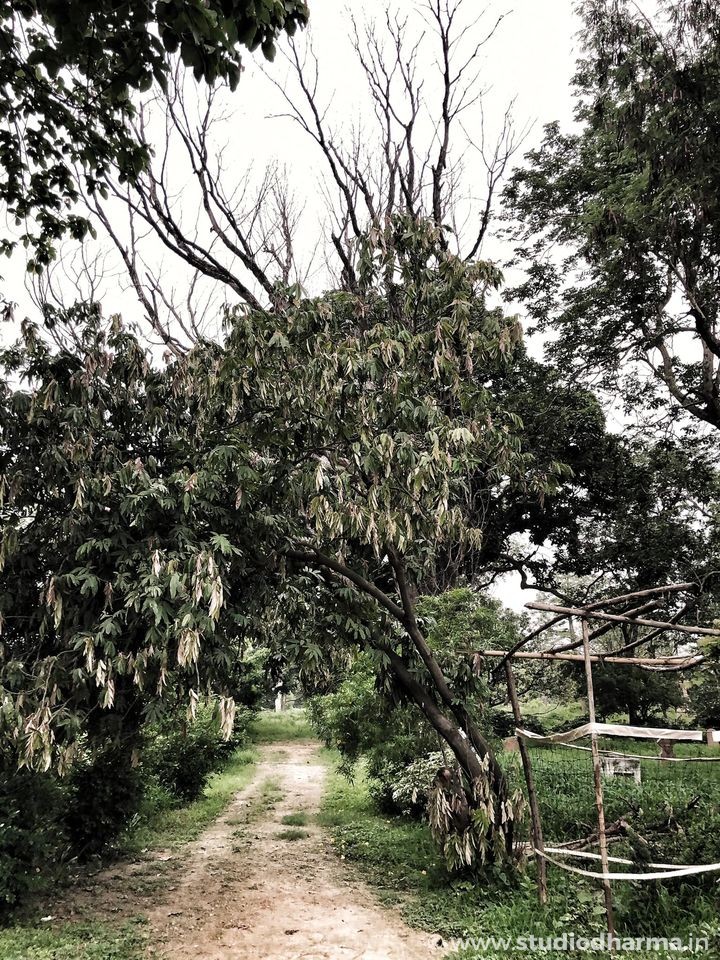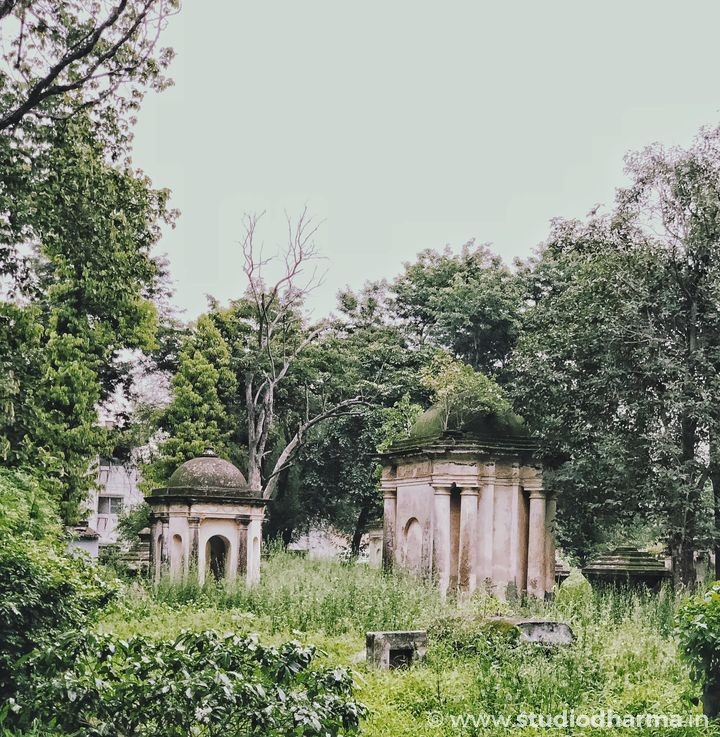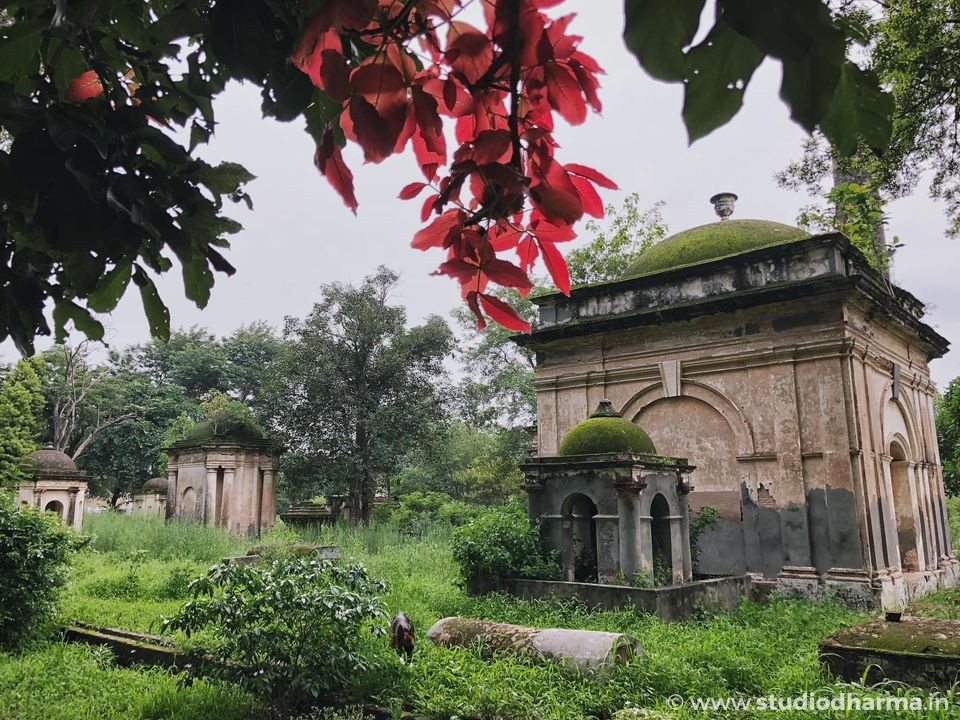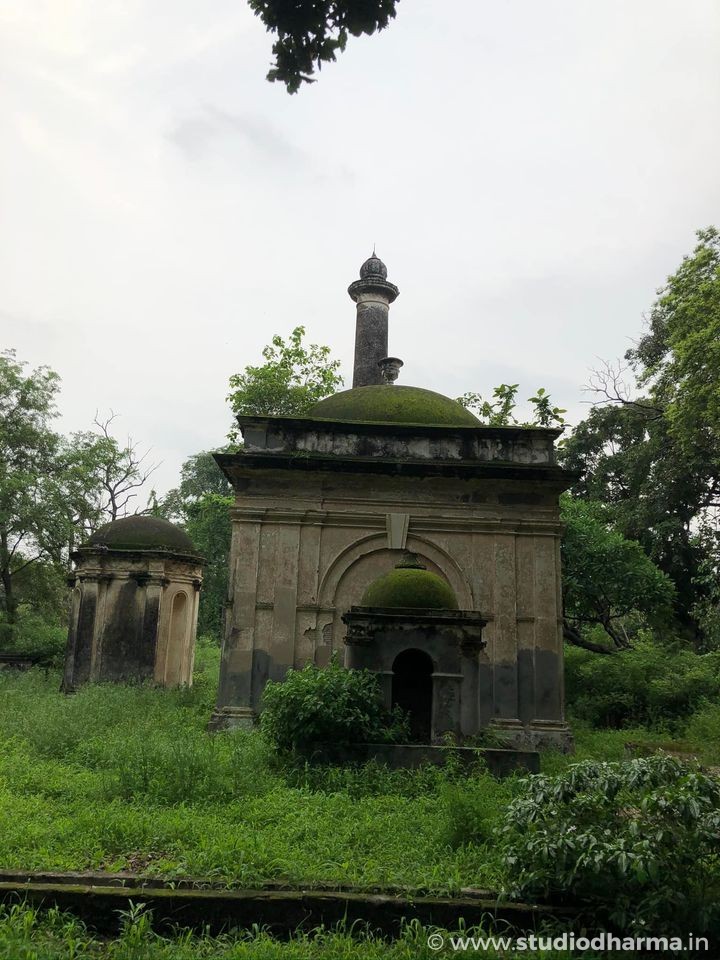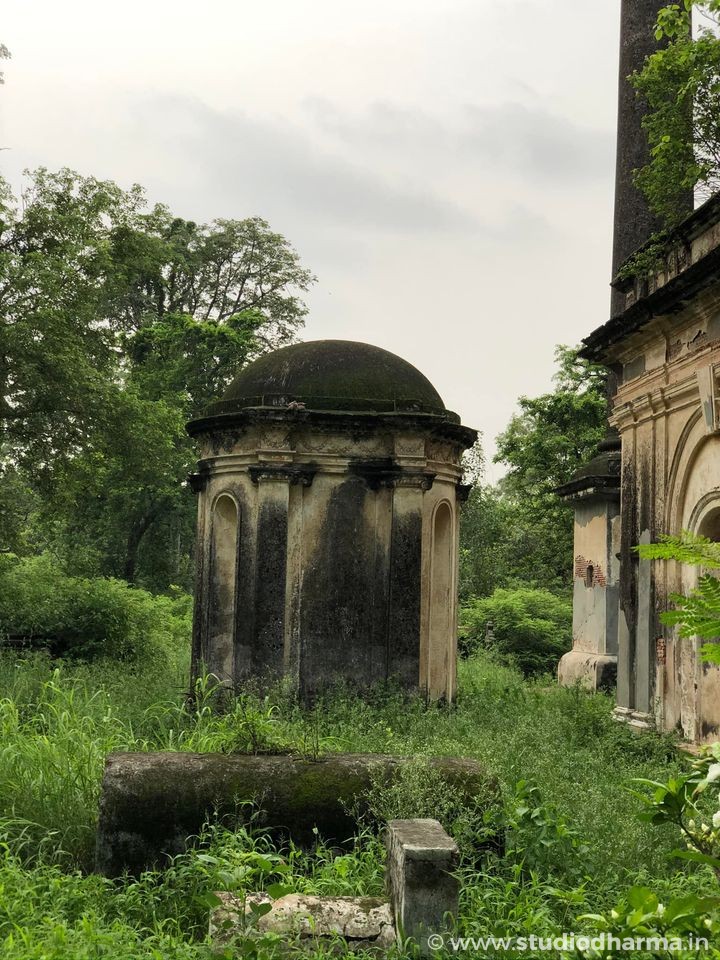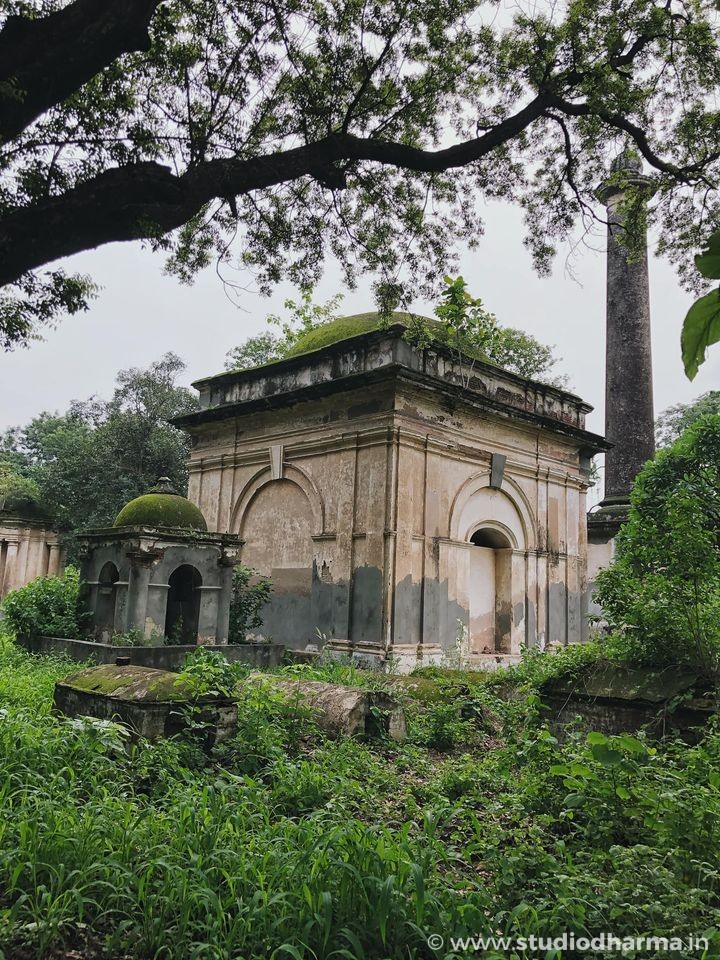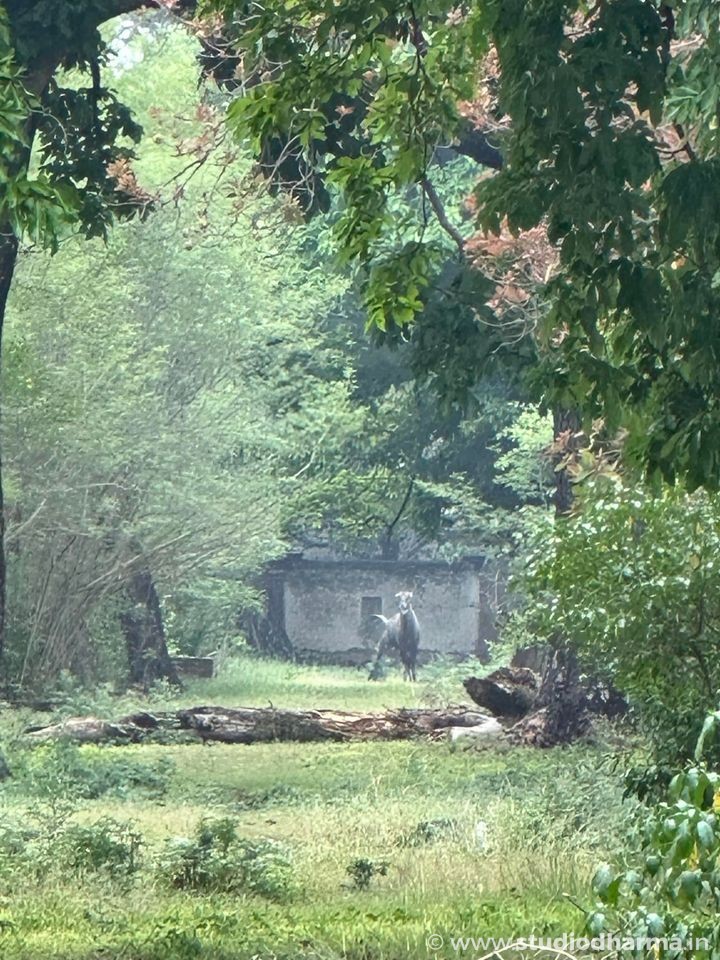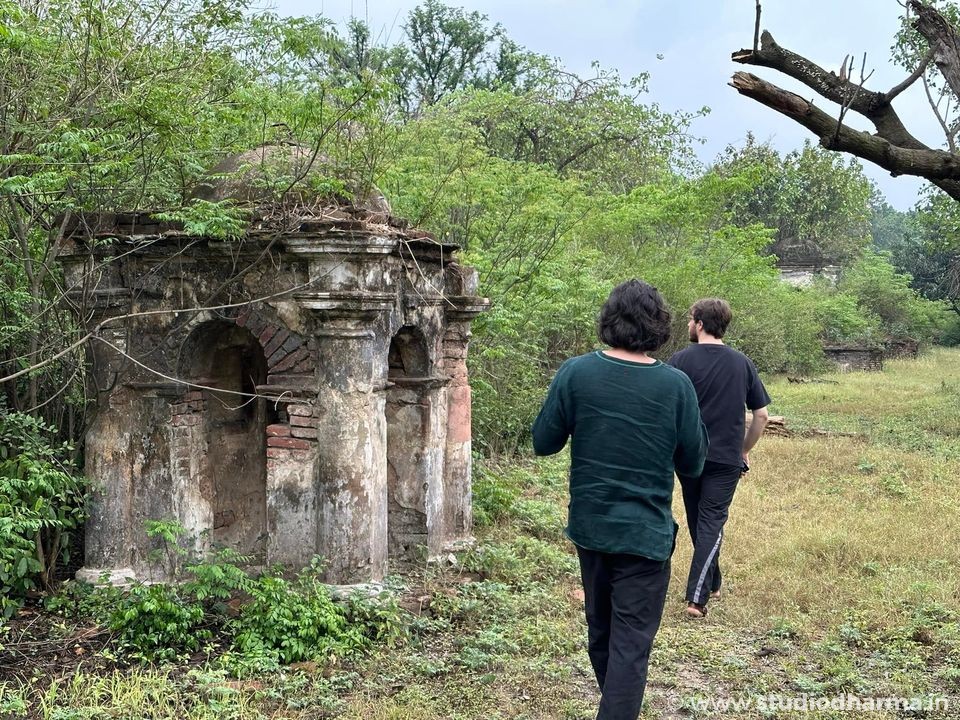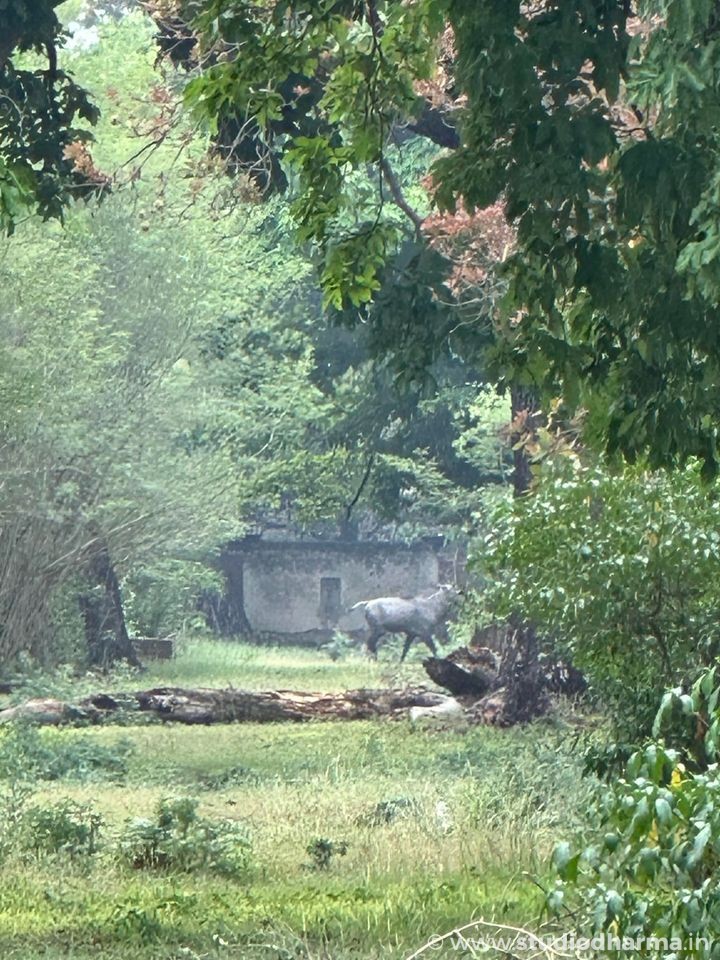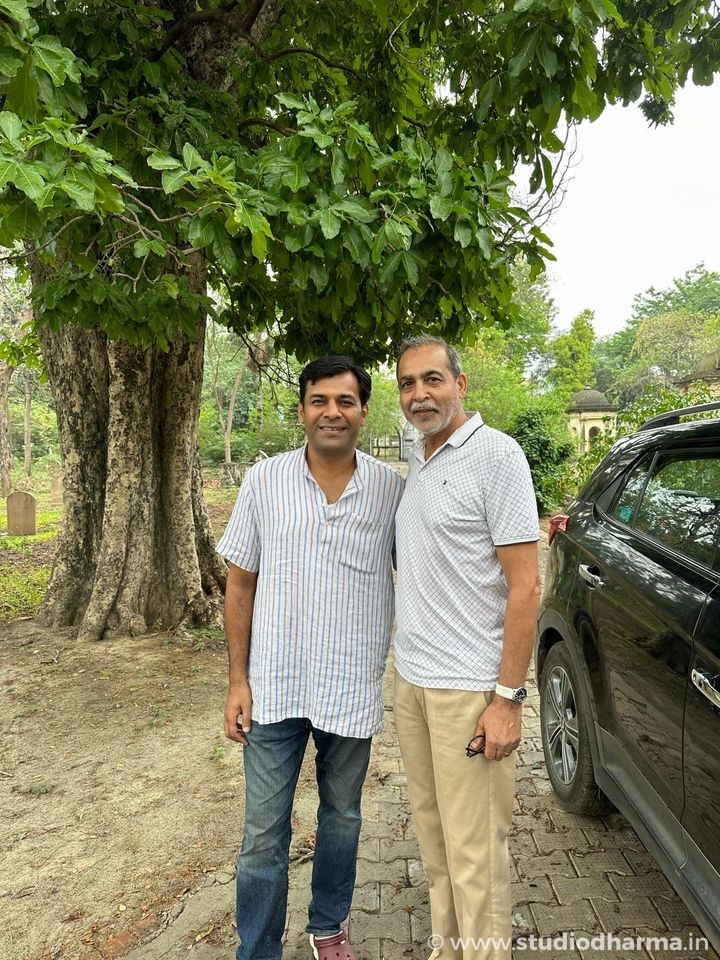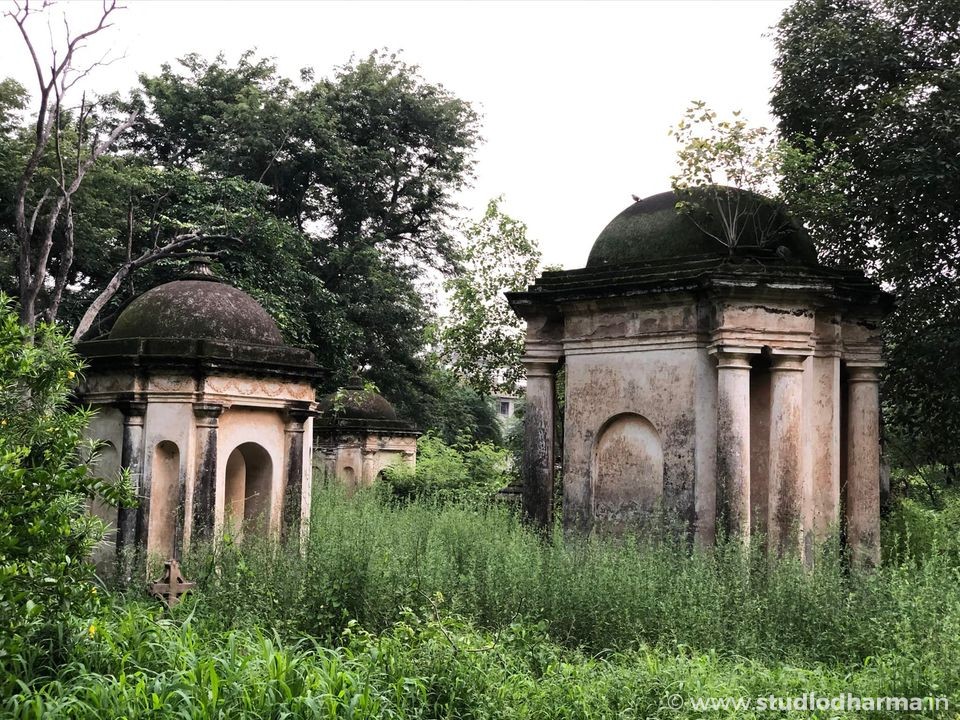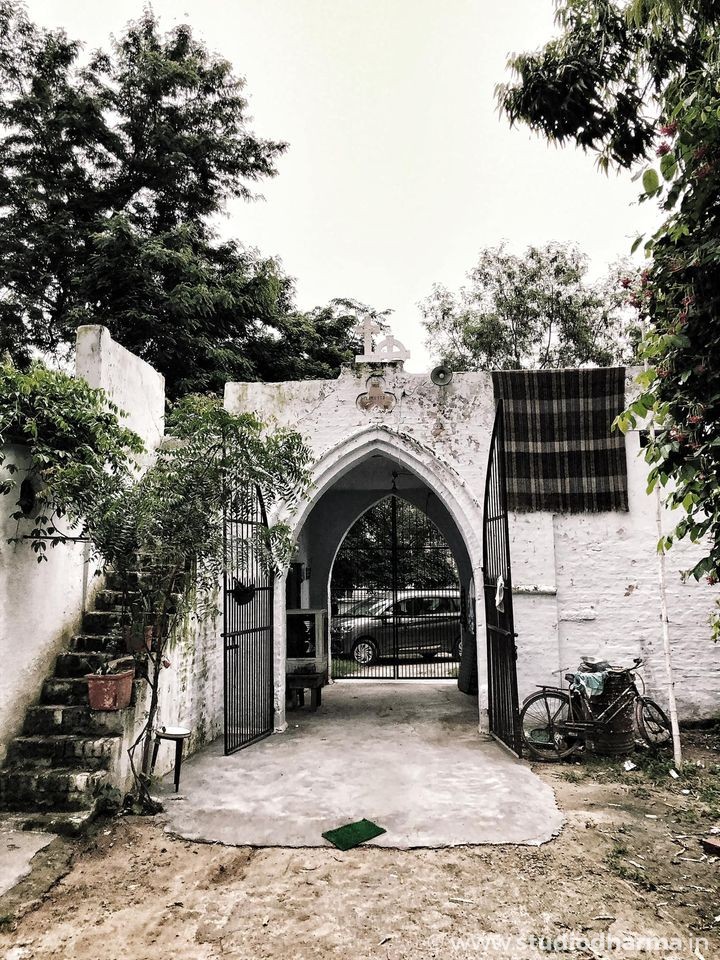ST JOHN’S CEMETERY,MEERUT.
ST JOHN’S CEMETERY,MEERUT.
In so far as India's freedom is concerned no other city became a more prominent flash point and drew the international attention of India's struggle against the British than Meerut city. Next to Barrackpore, W. Bengal Meerut was the second largest East India Company's garrison. Obviously, Meerut city's association with the Indian Rebellion of 1857 against the notorious British Company was not an accidental one. At the right opportunity the pent-up frustration and anger of oppressed Indians came out like a violent volcanic eruption and the city's barracks became sites of ill the government rioting soldiers. The famous slogan "Dilli Chalo" ("Let's march to Delhi!") was first raised here.
Meerut Cantonment is the place where the major rebellion started off when Hindu and Muslim soldiers were given new Enfield rifle cartridges rumored to have a coating of grease made of animal fat both pig and cow. What started out as a localized rebellion had turned out to be a mass struggle covering vast areas of the northern Indian states. Here, in Meerut 89 Indian soldiers who refused to use the greased cartridges to load the rifles were stripped of their uniforms, imprisoned for ten years and shackled - this was a major humiliation for the Indian soldiers. The rebels were from the 3rd cavalry and were from upper-class elite. Unable to bear the humiliation and ill treatment meted out to them, these soldiers, along with other imprisoned soldiers, escaped from the prison and declared themselves free. Then they revolted, attacked and killed several of the British authorities to take the city under their control. This marked the beginning of a widespread revolt across northern India as these soldiers marched towards Delhi. The upraising turned to be a towering inferno and the British added more fuel to it by killing rebels and innocent people in thousands without any mercy. The British burnt down some villages in and around Meerut in retaliation.
During this worst revolt Indians in tens of thousands were killed and on the British side, the rebels mercilessly killed British soldiers, civilians, women and children that might run into a few hundreds.
Here in Meerut, Western UP the 213 year-old sprawling cemetery, located in the cantonment town, has an old graveyard containing British casualties of the 1857 Revolt. Under the fallen leaves and foliage lie thousands of graves out of which there are numerous British soldiers' graves including those casualties of the 1857 Revolt around 50. Many tombs have overgrowth of bushes trees, etc., and are heavily damaged.
The public is not allowed to go inside the graves without prior permission. out of 50 plus British soldiers killed in the revolt, 36 were buried here and the rest are not identifiable because of various reasons - graves were made of soft materials and are damaged and some are so cemented identification is a difficult one. Only nine British graves have been identified so far.
the oldest grave dates back to 1810. The first British soldier killed in the revolt, 53 year old John Finnis' grave is here. He was killed on 10 May 1857 first day of uprising. Vincent Recar 48 was also killed on the same day, so was John Henry Taylor 57 year old captain. They belong to 20th regiment. 30 year old Louisa Sophia wife of Donald McDonald, Officer and her 3 young children were brutally murdered by the rebels while escaping from the burning house at night. Though her Indian servants covered her with a burkha, she could not escape from the fury of hell-bent mob.
St. John's cemetery wears a forlorn look implying its loss of old glory and the descent of gloom.
The graveyard is spread over 27 acres and flowering lantana and the presence of venomous snakes, scorpions is a menace to the prospective visitors and needs to be taken care.
सेंट जॉन्स कब्रिस्तान, मेरठ।
जहां तक भारत की आजादी का सवाल है, मेरठ शहर की तुलना में कोई अन्य शहर इतना प्रमुख फ्लैश प्वाइंट नहीं बना और अंग्रेजों के खिलाफ भारत के संघर्ष का अंतरराष्ट्रीय ध्यान आकर्षित नहीं किया। बैरकपुर, पश्चिम बंगाल के बाद मेरठ ईस्ट इंडिया कंपनी की दूसरी सबसे बड़ी छावनी थी। जाहिर है, कुख्यात ब्रिटिश कंपनी के खिलाफ 1857 के भारतीय विद्रोह के साथ मेरठ शहर का जुड़ाव कोई आकस्मिक नहीं था। सही अवसर पर उत्पीड़ित भारतीयों की दबी हुई हताशा और गुस्सा एक हिंसक ज्वालामुखी विस्फोट की तरह बाहर आया और शहर की बैरकें सरकारी दंगाई सैनिकों की जगह बन गईं। प्रसिद्ध नारा "दिल्ली चलो" ("आओ दिल्ली की ओर चलें!") पहली बार यहीं उठाया गया था।
मेरठ छावनी वह स्थान है जहां प्रमुख विद्रोह तब शुरू हुआ जब हिंदू और मुस्लिम सैनिकों को नए एनफील्ड राइफल कारतूस दिए गए थे, अफवाह थी कि उन पर सुअर और गाय दोनों जानवरों की चर्बी से बनी चर्बी की परत थी। जो एक स्थानीय विद्रोह के रूप में शुरू हुआ वह उत्तर भारतीय राज्यों के विशाल क्षेत्रों को कवर करते हुए एक जन संघर्ष में बदल गया। इधर, मेरठ में 89 भारतीय सैनिकों ने, जिन्होंने राइफलों में चर्बी लगे कारतूसों का उपयोग करने से इनकार कर दिया था, उनकी वर्दी छीन ली गई, दस साल की कैद की गई और बेड़ियाँ डाल दी गईं - यह भारतीय सैनिकों के लिए एक बड़ा अपमान था। विद्रोही तीसरी घुड़सवार सेना से थे और उच्च वर्ग के कुलीन वर्ग से थे। अपने साथ हुए अपमान और दुर्व्यवहार को सहन करने में असमर्थ, ये सैनिक, अन्य कैद सैनिकों के साथ, जेल से भाग गए और खुद को स्वतंत्र घोषित कर दिया। फिर उन्होंने शहर को अपने नियंत्रण में लेने के लिए विद्रोह किया, हमला किया और कई ब्रिटिश अधिकारियों को मार डाला। इससे पूरे उत्तर भारत में व्यापक विद्रोह की शुरुआत हुई क्योंकि इन सैनिकों ने दिल्ली की ओर मार्च किया। यह विद्रोह एक विशाल नरक में बदल गया और अंग्रेजों ने बिना किसी दया के हजारों की संख्या में विद्रोहियों और निर्दोष लोगों को मारकर इसमें और अधिक घी डाल दिया। अंग्रेजों ने जवाबी कार्रवाई में मेरठ और उसके आसपास के कुछ गांवों को जला दिया।
इस भीषणतम विद्रोह के दौरान हजारों की संख्या में भारतीय मारे गए और ब्रिटिश पक्ष की ओर से, विद्रोहियों ने ब्रिटिश सैनिकों, नागरिकों, महिलाओं और बच्चों को बेरहमी से मार डाला, जिनकी संख्या सैकड़ों में हो सकती है।
यहां पश्चिमी उत्तर प्रदेश के मेरठ में छावनी शहर में स्थित 213 वर्ष पुराना विशाल कब्रिस्तान है, जिसमें 1857 के विद्रोह के ब्रिटिश हताहतों का एक पुराना कब्रिस्तान है। गिरे हुए पत्तों और पत्तियों के नीचे हजारों कब्रें हैं जिनमें से कई ब्रिटिश सैनिकों की कब्रें हैं जिनमें 1857 के विद्रोह में 50 के आसपास हताहत हुए लोगों की कब्रें भी शामिल हैं। कई कब्रों पर झाड़ियां, पेड़ आदि उग आए हैं और भारी क्षति हुई है।
जनता को पूर्व अनुमति के बिना कब्रों के अंदर जाने की अनुमति नहीं है। विद्रोह में मारे गए 50 से अधिक ब्रिटिश सैनिकों में से, 36 को यहीं दफनाया गया था और बाकी को विभिन्न कारणों से पहचाना नहीं जा सका - कब्रें नरम सामग्री से बनी थीं और क्षतिग्रस्त हैं और कुछ इतनी सीमेंटेड हैं कि पहचान करना मुश्किल है। अब तक केवल नौ ब्रिटिश कब्रों की पहचान की गई है।
सबसे पुरानी कब्र 1810 की है। विद्रोह में मारे गए पहले ब्रिटिश सैनिक, 53 वर्षीय जॉन फिनिस की कब्र यहां है। विद्रोह के पहले दिन 10 मई 1857 को उनकी हत्या कर दी गई। उसी दिन विंसेंट रेकर 48 की भी मौत हो गई, 57 वर्षीय कप्तान जॉन हेनरी टेलर की भी मौत हो गई। वे 20वीं रेजिमेंट के हैं। अधिकारी डोनाल्ड मैक्डोनाल्ड की 30 वर्षीय पत्नी लुईसा सोफिया और उसके 3 छोटे बच्चों की रात में जलते हुए घर से भागते समय विद्रोहियों ने बेरहमी से हत्या कर दी। हालाँकि उसके भारतीय नौकरों ने उसे बुर्के से ढक दिया था, फिर भी वह उग्र भीड़ के प्रकोप से बच नहीं सकी।
सेंट जॉन कब्रिस्तान का स्वरूप उदास है, जिसका अर्थ है कि इसका पुराना गौरव खो गया है और निराशा छा गई है।
कब्रिस्तान 27 एकड़ में फैला हुआ है और यहां फूलों वाले लैंटाना और जहरीले सांपों, बिच्छुओं की मौजूदगी संभावित आगंतुकों के लिए खतरा है और इस पर ध्यान देने की जरूरत है।
What's Your Reaction?








